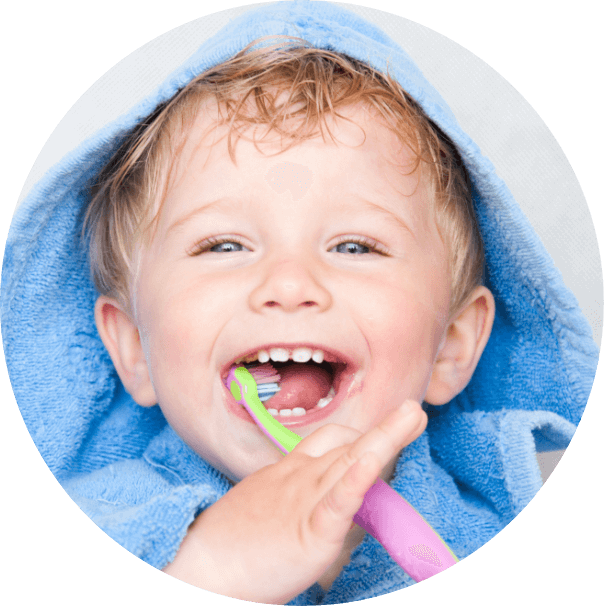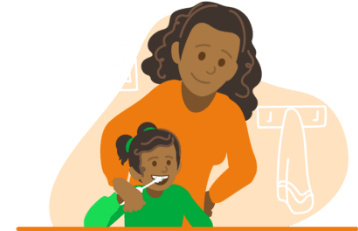
Say “bye-bye” to wiping gums and finger brushing. This next stage is all about learning to brush and building a routine of oral care for healthy, adorable smiles. Good thing Orajel™ Kids is pediatrician recommended from first tooth to full smile.
Around age 2, when most baby teeth are in, it’s a great time to start developing an oral care routine. Because your tot is just beginning to learn fine motor skills like gripping and moving a toothbrush, plan to be their brushing buddy and do the oral care for them.

Until your child is an independent brusher, keep brushing their teeth with a soft bristle brush twice a day. Use a small, pea-size squirt of fluoride-free training toothpaste. Since it is fluoride-free, rest assured, it is safe if swallowed when used as directed. Still have your child practice spitting to be a pro by the time they transition to fluoride toothpaste sometime after age 2.
As children grow, so do their motor skills. Here are 3 tips to help make brushing for your child second nature.
When you practice brushing together, have your child stand on a stool and look into the mirror while brushing. This helps avoid neck strain as your child looks up at you. Your little one stays focused and is closer to the sink to practice spitting (that means less mess, too!).
Your little one LOVES mimicking everything you do. Use that to your advantage when teaching how to brush. A game of “monkey see; monkey do” helps teach your child lifelong brushing skills.
If your child hesitates or avoids brushing, encourage your little one’s oral care routine with some clever and loving motivation.
Everything is more fun with a friend—even brushing! Invite your child to bring along a stuffed animal to brush, too. This lends a playtime feel to oral care and helps put your child at ease.
Compliments and positive reinforcements go a long way. A simple "you’ve got this," "nice job," or high five can affirm your child is on the right track. This handy My Happy Smiles calendar lets you and your kiddos set goals and track & reward every toothbrushing success.
Since your tyke might not see other kids brushing, they feel like the only one learning this new skill. But if you read books, watch videos, or even talk about brushing, it normalizes the task and makes it fun!
Since you’re still helping your child brush twice daily, you’re likely to notice change and growth. Here are 3 things to watch for during this stage.
Thumb sucking and using a paci is totally normal, but strive to wean by 3 years old. Sucking for too long can lead to braces or corrective surgery.
Some kids need more fluoride than others, so make sure you chat with the dentist. The dentist might recommend supplements if a fluoride boost is needed.
Regularly lift your child’s lips to check for small white or brown spots on their teeth. These spots may indicate decay. If you notice discoloration, schedule an appointment with your dentist.